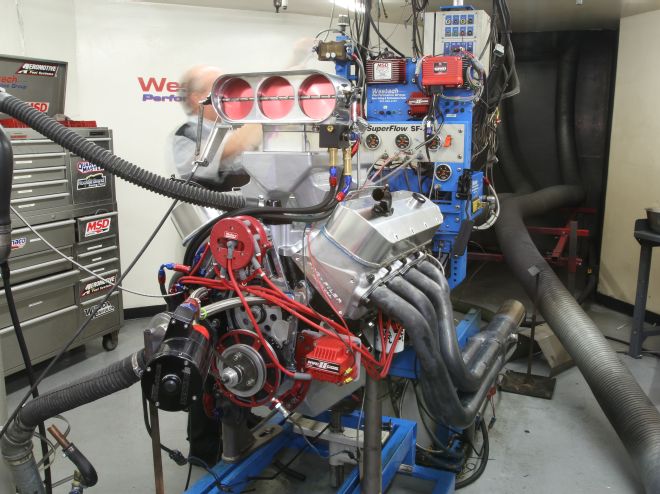
There is something about a big-block that is just plain cool. Combine that X-factor with massive cubic inches, ramped-up compression, and injected alcohol and you have a combination that is set on kill. When we last left off, Project Old School, Bad, our 572ci big-block Chevy, had made the jump from a pile of parts to an assembled engine ready to go to battle on the engine dyno at Westech Performance. The goal was to follow a build outside of the normal street/strip mill, and prove that big horsepower can still easily be attained without the use of nitrous or boost – just like drag racers of the golden years routinely built.
The 572 is destined for use in an ’80s Top Alcohol Funny Car chassis, and with its expected power output, should easily push the 1,400-pound car to 7.20 elapsed times in the quarter-mile without breaking a sweat.
Unlike most of the dyno testing we do here at Super Chevy (as with the vast majority of other enthusiast brands) this engine lacks a traditional carbureted or electronically fuel injected induction system. In its place is a time-tested and track-proven Enderle mechanical injection system.
It’s important to differentiate between mechanical and electronic injection systems. In an electronic system, a computer uses electrical pulses to power injectors on and off, feeding fuel to the cylinders based on either a pre-programmed map or feedback from various sensors such as those monitoring air temperature, exhaust oxygen content, coolant temperature, etc.
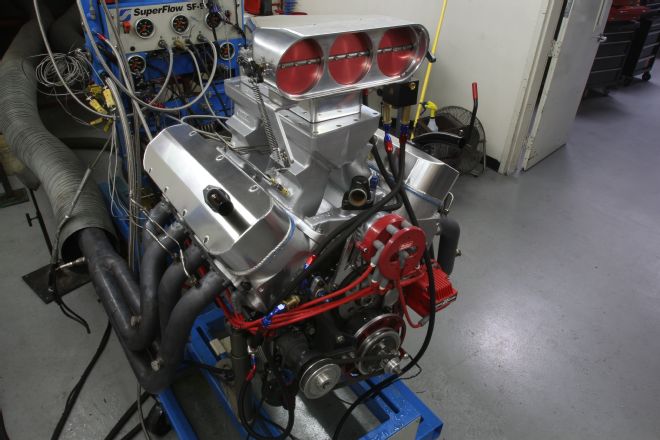
In a mechanically injected system, there is no electronic involvement whatsoever. The entire fuel system operates off of fuel pressure and various orifice sizes. The upsides to a system like this are simplicity, adjustability, and consistency. The trade-off is that the throttle is essentially an on/off switch with very little fuel metering ability between idle and wide open throttle – perfect for the racetrack, not so much for the street.
The core components of the Enderle system on Old School, Bad are the mechanical fuel pump (which is driven off of the crankshaft), the barrel valve, and the eight injectors (also known as nozzles).
Fuel pressure from the mechanical pump arrives at the barrel valve where it either gets sent into the engine through the injectors or back to the tank via the fuel pressure relief spring or the main pill. The barrel valve has a small, tapered groove cut into the center that allows fuel to pass by for idle metering and for some progressivity in the fuel curve during its rotation. But, that progressivity is minimal and the system is primarily designed to operate at full throttle.
Mechanical injection systems don’t use jets like a carb would. Instead, they use a pill in the return line. Because the pill regulates how much fuel gets sent back to the tank, inserting a smaller orifice size will actually richen the fuel curve by sending more fuel to the nozzles and less back to the tank. This is completely unlike a carburetor that requires a larger orifice size to increase fuel flow into the engine.
After arriving at Westech with the engine, we strapped it to the dyno and got to work in our quest for power. Watching this old-school build in action was a refreshing step off Super Chevy’s normal beaten path and it was surprising just how fast Westech’s Steve Brule and the engine’s builder Ken Gilispie had the engine dialed in. Seriously, who could pass up an opportunity to learn the art of tuning mechanical injection?
We ran the engine through its paces, tweaking timing and fuel ratios until peak power (see graph) was achieved. And, while we had the engine on the dyno, we thought it would be interesting to run it back-to-back with race gas and compare the power curves. Read on to find out how our big-cube brawler did at its first matchup.
Spec Box The Guts of Old School, Bad Block: World Products Merlin III iron Bore: 4.500 inch Crankshaft: 4.500-inch stroke Crower Enduro Connedting Rods: Crower Maxi-Light billet steel Bearings: Clevite Pistons: Ross Racing Pistons custom 2618-aluminum forgings (16.2:1 compression), Total Seal gapless piston rings Cylinder Heads: Profiler 375cc Sniper X CNC Valvetrain: T&D shaft-mount rockers, Erson lifters, Manton pushrods, Jesel beltdrive Camshaft: Bullet Cams solid roller 0.900/0.850 lift, 285/300 duration (intake/exhaust), 115 LSA Fasteners: ARP Induction: Enderle mechanical fuel injection with Bird Catcher hat Ignition: Mallory distributor, MSD coil and ignition box Machine Work Dougan’s Engine and Machine
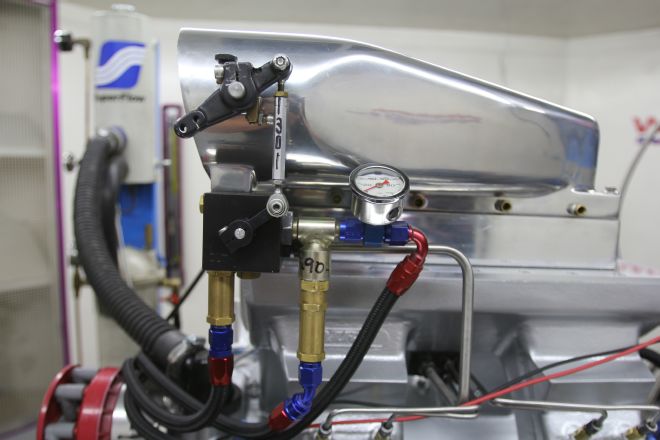 The small, black housing contains the barrel valve. The front brass fitting contains the relief valve that controls how much pressure the entire system operates at and the second brass fitting contains the main pill that meters fuel flow between the nozzles and the fuel tank.
The small, black housing contains the barrel valve. The front brass fitting contains the relief valve that controls how much pressure the entire system operates at and the second brass fitting contains the main pill that meters fuel flow between the nozzles and the fuel tank.
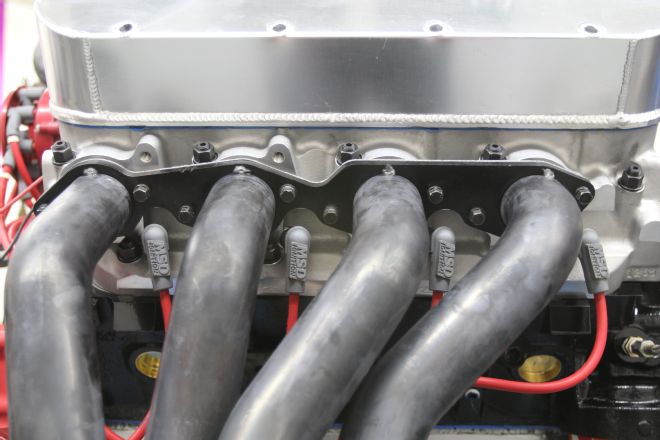 A set of large tube headers expel spent exhaust gasses while MSD ignition wires light the fire.
A set of large tube headers expel spent exhaust gasses while MSD ignition wires light the fire.
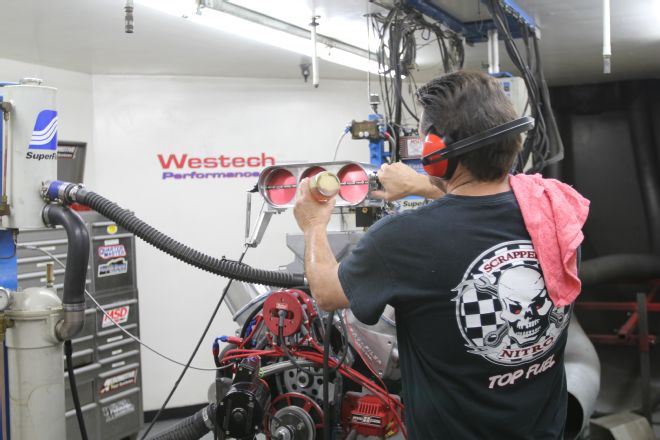 Starting a high-compression alcohol engine cold can be a bit of a challenge. To make the process easier, Gilispie squirts some 87 octane down the butterflies. The gasoline is easier to ignite and helps the engine kick to life.
Starting a high-compression alcohol engine cold can be a bit of a challenge. To make the process easier, Gilispie squirts some 87 octane down the butterflies. The gasoline is easier to ignite and helps the engine kick to life.
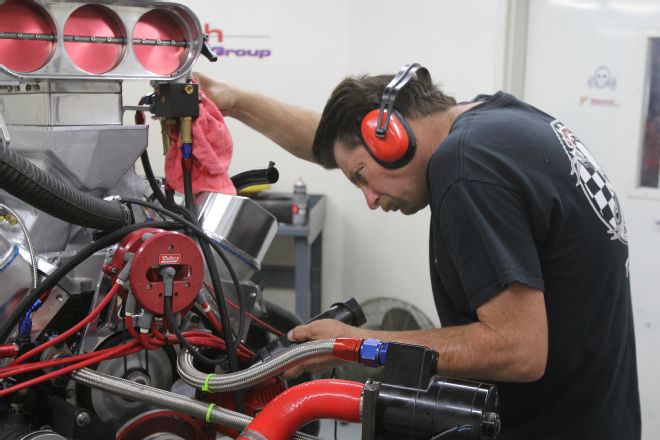 Once the engine fired, Gilispie immediately got to work setting the timing on the front-mount Mallory distributor. A front-mount unit runs off of a belt and is isolated from vibrations and twist in the solid roller lifter camshaft. This makes for a much more accurate timing signal.
Once the engine fired, Gilispie immediately got to work setting the timing on the front-mount Mallory distributor. A front-mount unit runs off of a belt and is isolated from vibrations and twist in the solid roller lifter camshaft. This makes for a much more accurate timing signal.
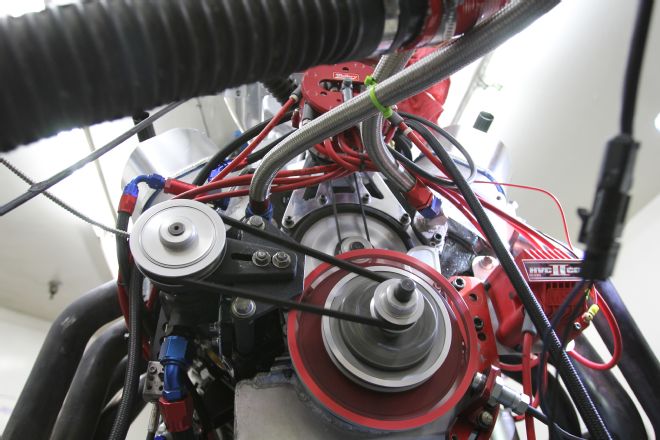 Here’s a shot of the beast in action. Note the belts driving the mechanical fuel pump (left) and distributor (above).
Here’s a shot of the beast in action. Note the belts driving the mechanical fuel pump (left) and distributor (above).
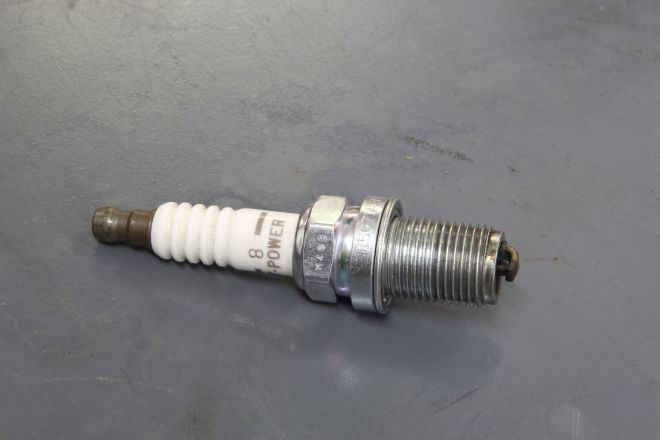 See anything wrong with this picture? Because of the sky-high 16.2:1 compression, the pistons’ domes come very, very close to the spark plugs. This necessitated clocking, or indexing, the spark plugs to avoid contact with the pistons – something we accidentally forgot to do after taking a spark plug reading.
See anything wrong with this picture? Because of the sky-high 16.2:1 compression, the pistons’ domes come very, very close to the spark plugs. This necessitated clocking, or indexing, the spark plugs to avoid contact with the pistons – something we accidentally forgot to do after taking a spark plug reading.
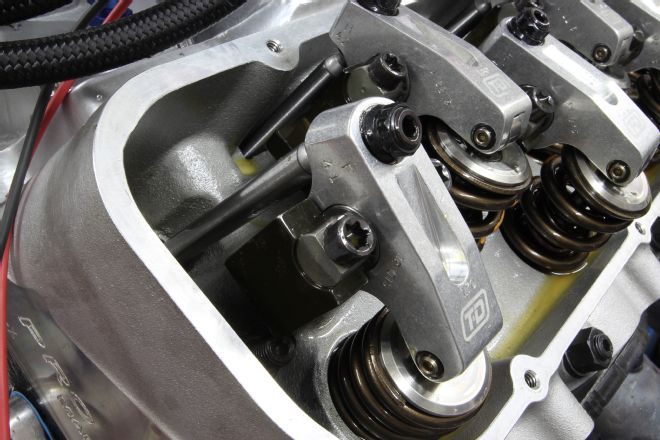 The valvesprings in this engine produce just over 1,000 pounds of pressure at peak lift (0.900-inches). Luckily, the T&D shaft-rocker system is up to the challenge of reigning in that massive energy.
The valvesprings in this engine produce just over 1,000 pounds of pressure at peak lift (0.900-inches). Luckily, the T&D shaft-rocker system is up to the challenge of reigning in that massive energy.
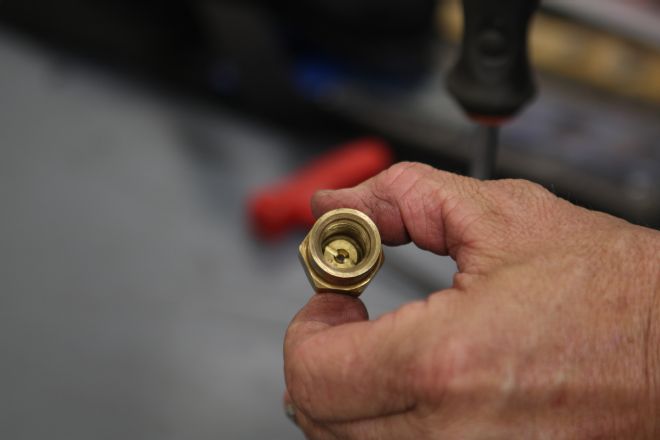 Unlike a carb, a smaller pill (jet) in a mechanical injection system actually richens the mixture. This is so because the smaller pill allows less fuel to return to the tank, sending more of it into the engine. Also, changing the fuel tune-up is a quick process since changing the one pill alters the entire curve.
Unlike a carb, a smaller pill (jet) in a mechanical injection system actually richens the mixture. This is so because the smaller pill allows less fuel to return to the tank, sending more of it into the engine. Also, changing the fuel tune-up is a quick process since changing the one pill alters the entire curve.
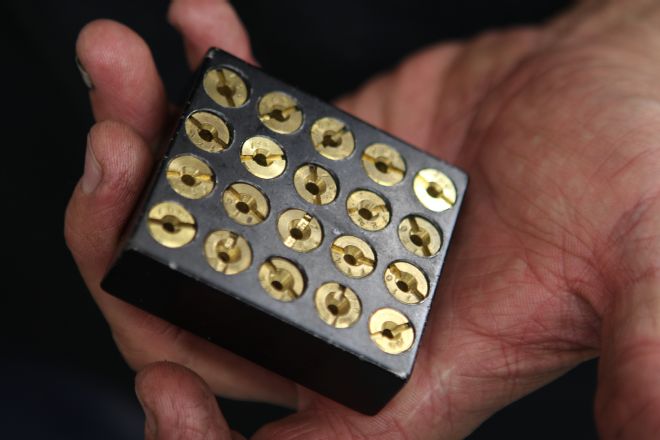 Here is Gilispie’s arsenal of spare main pills. At the track these account for various changes in temperature, humidity, and altitude.
Here is Gilispie’s arsenal of spare main pills. At the track these account for various changes in temperature, humidity, and altitude.
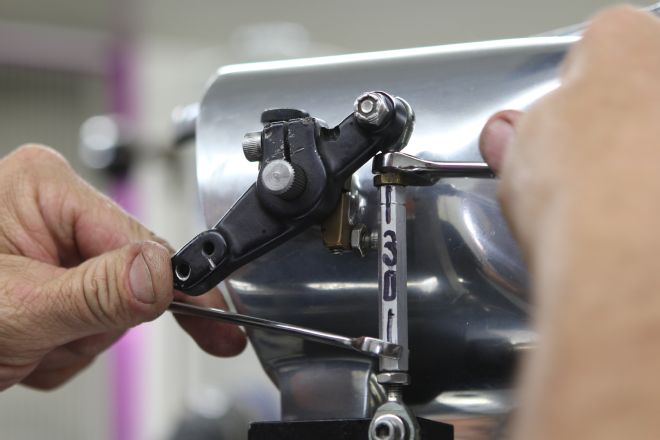 Here is the throttle linkage that connects the throttle plates to the barrel valve. Gilispie can alter it at the racetrack to slow the car down or speed it up depending on track conditions.
Here is the throttle linkage that connects the throttle plates to the barrel valve. Gilispie can alter it at the racetrack to slow the car down or speed it up depending on track conditions.
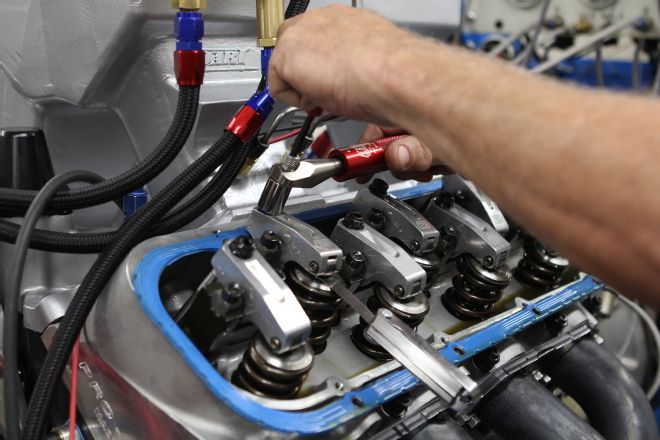 Westech’s Steve Brule does his all-to-familiar lash dance, rolling the engine over and making sure each valve is within spec.
Westech’s Steve Brule does his all-to-familiar lash dance, rolling the engine over and making sure each valve is within spec.
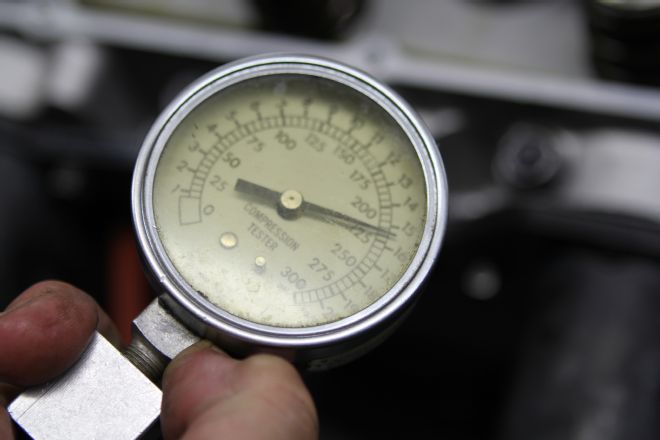 A cranking compression test revealed the engine to produce 224 psi. While that may sound low for an engine with 16.2:1 compression, keep in mind the radical camshaft timing, which allows a considerable amount of compression to bleed out of the late-closing intake valve.
A cranking compression test revealed the engine to produce 224 psi. While that may sound low for an engine with 16.2:1 compression, keep in mind the radical camshaft timing, which allows a considerable amount of compression to bleed out of the late-closing intake valve.
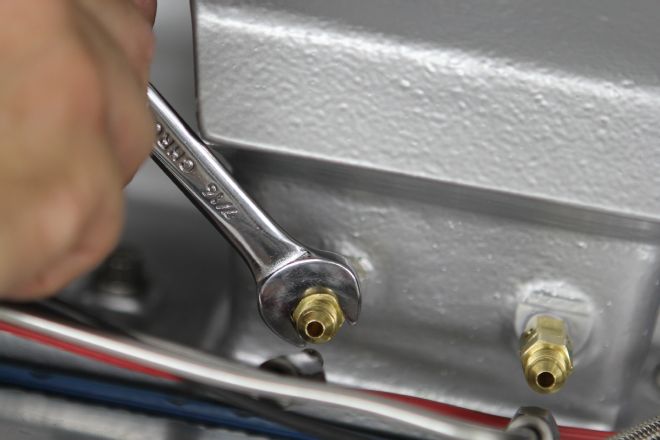 Gilispie made one nozzle change during the dyno session. The swap was not part of the tuning process, but a necessary means in order to make a few pulls on race gas instead of alcohol. (see graph)
Gilispie made one nozzle change during the dyno session. The swap was not part of the tuning process, but a necessary means in order to make a few pulls on race gas instead of alcohol. (see graph)
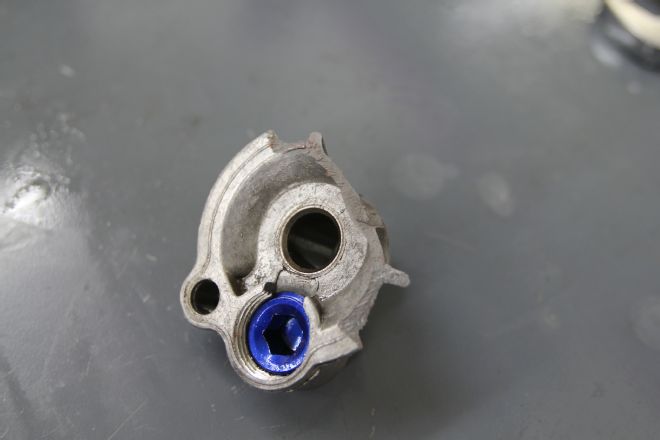 The author has a bad habitat of leaving Westech’s floors dirtier than he found them. In this case, the oil filter adapter, a factory unit that had its relief valve plugged, cracked in half; dramatically (and quite liberally) coating the dyno cell floor with oil. The solution, and the recommendation for readers, is to switch to a higher strength billet oil filter adapter for any performance applications.
The author has a bad habitat of leaving Westech’s floors dirtier than he found them. In this case, the oil filter adapter, a factory unit that had its relief valve plugged, cracked in half; dramatically (and quite liberally) coating the dyno cell floor with oil. The solution, and the recommendation for readers, is to switch to a higher strength billet oil filter adapter for any performance applications.
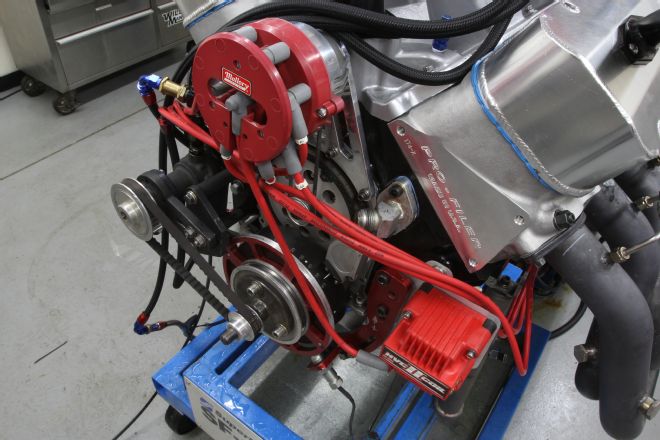 The Profiler cylinder heads used for the test flow a whopping 477 cfm at 0.900 inches of lift. They feature a standard 24-degree valve angle, which makes them compatible with the majority of stock-style valvetrain components. According to Steve Brule, 1,000 horsepower is right about the limit of a head of this design. Past that point, cylinder heads with modified valve angles and specialized port designs are needed.
The Profiler cylinder heads used for the test flow a whopping 477 cfm at 0.900 inches of lift. They feature a standard 24-degree valve angle, which makes them compatible with the majority of stock-style valvetrain components. According to Steve Brule, 1,000 horsepower is right about the limit of a head of this design. Past that point, cylinder heads with modified valve angles and specialized port designs are needed.
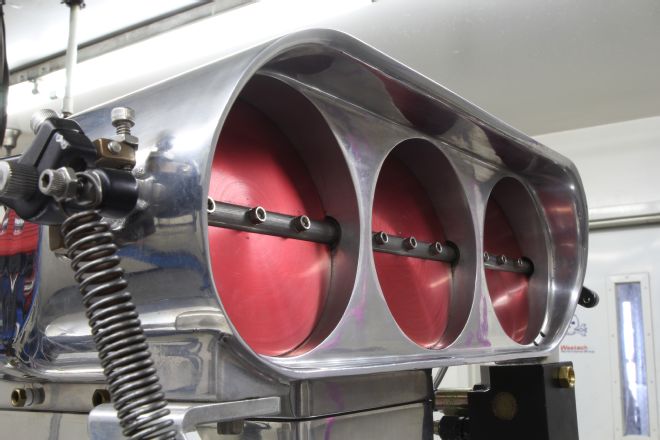 At the end of a day of tuning (and 20-plus pulls on the engine dyno) our 572ci big-block cranked out a solid 964 genuine and naturally aspirated horsepower. While we would have loved to see it crest the 1,000 mark, this is a downright respectable number for an engine with nothing more than high-end, conventional parts and big displacement.
At the end of a day of tuning (and 20-plus pulls on the engine dyno) our 572ci big-block cranked out a solid 964 genuine and naturally aspirated horsepower. While we would have loved to see it crest the 1,000 mark, this is a downright respectable number for an engine with nothing more than high-end, conventional parts and big displacement.
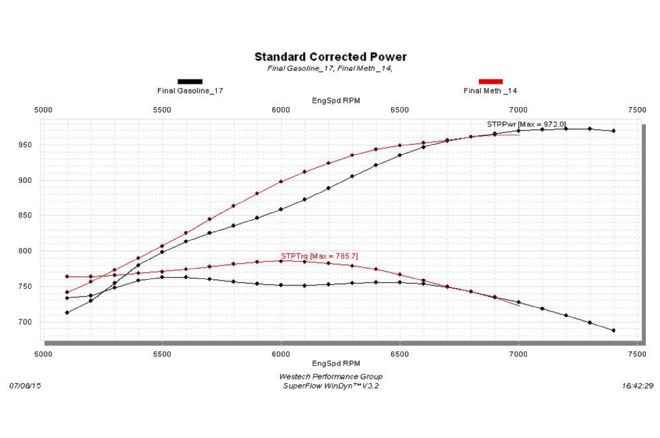
Once we had finished tuning the engine for methanol and were satisfied with its 964-horsepower output, we thought it would be interesting to run a back-to-back comparison with race gas. What we found was very interesting.
On alcohol, the engine made substantially more torque than race gasoline – a known and expected benefit of methanol. The alcohol curve was short and steep, with peak power ringing in at 6,900 rpm.
On race gas, things got interesting and the personality of the engine changed. Torque fell off substantially (expected), but peak power actually improved to 972 (unexpected). What was really surprising was how the engine carried power to a peak of 7,200 rpm and didn’t begin to drop off until almost 7,400. The theory here is that because methanol has a different stoichiometric ratio than gasoline, and it takes a higher volume of fuel to produce the same power, that higher volume of fuel could have been limiting airflow into the runners causing the engine to run out of breath a few hundred rpm sooner than the race gas. While this is just a theory, it would explain the difference in power peaks and why the race gas carried rpm slightly farther.